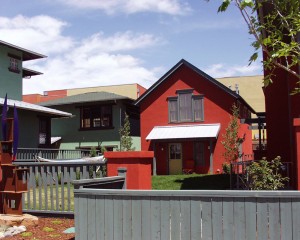The Great Recession has changed the development market. I know what you are thinking, ‘no kidding John, that is a massive understatement’. Seriously, when you take a broad perspective of the mind shift that has occurred for the consumers of ‘development’, a ‘given’ market five years ago is upside down today.
This is true for all types of development. But, in this blog post I would like to focus on the residential component. The rental market used to primarily serve only a couple of market demographics: Low income households and people in a transitional period of their life. Transitional periods include people just getting out of school; those moving to a new place; those who move often; or possibly people with domestic obstacles such as divorce or separation.
Today, the rental market dominates all other types of land development. People choose to not invest in the single-family marketplace, or they cannot get the financing to make it possible. Many people who live in a place for a short amount of time, or travel to different cities often, still own their home from their last destination and therefore choose to rent in their next destination. This has caused a dynamic shift to the pool in the rental marketplace, creating a great amount of diversity of rental consumers.
Generally speaking, rental market and medium to high density development are synonymous. Apartments and apartment complexes are all the rage right now. In fact, EVstudio is currently involved in several projects involving apartments varying from large complexes to small infill apartment homes.
Large apartment classes are not the only way to tap into this market. The conversion of under-utilized, or even abandoned, offices downtown are easy candidates for conversion to studio apartments. If you are lucky enough to own one of these buildings in a city with a form-based code that permits this change administratively, the conversion can be as simple as an interior remodel.
Some of the best and most livable apartments come in the form of Accessory Dwelling Units (ADU’s), or sometimes referred to as In-Law Quarters, Granny Flats, or Carriage Homes. These are additional structures found typically on detached single-family lots or above garages of townhouses.

Many Pre-WWII neighborhoods near a city’s core include ADU’s. The trick is for our cities to understand that it is an easy and effective way to increase the population at the core of the city. Many cities have a dated Euclidian Zoning Code that does not allow ADU’s, or worst yet, prohibits the use of an existing ADU. This is one of the many policies that need updated for a resilient city.






